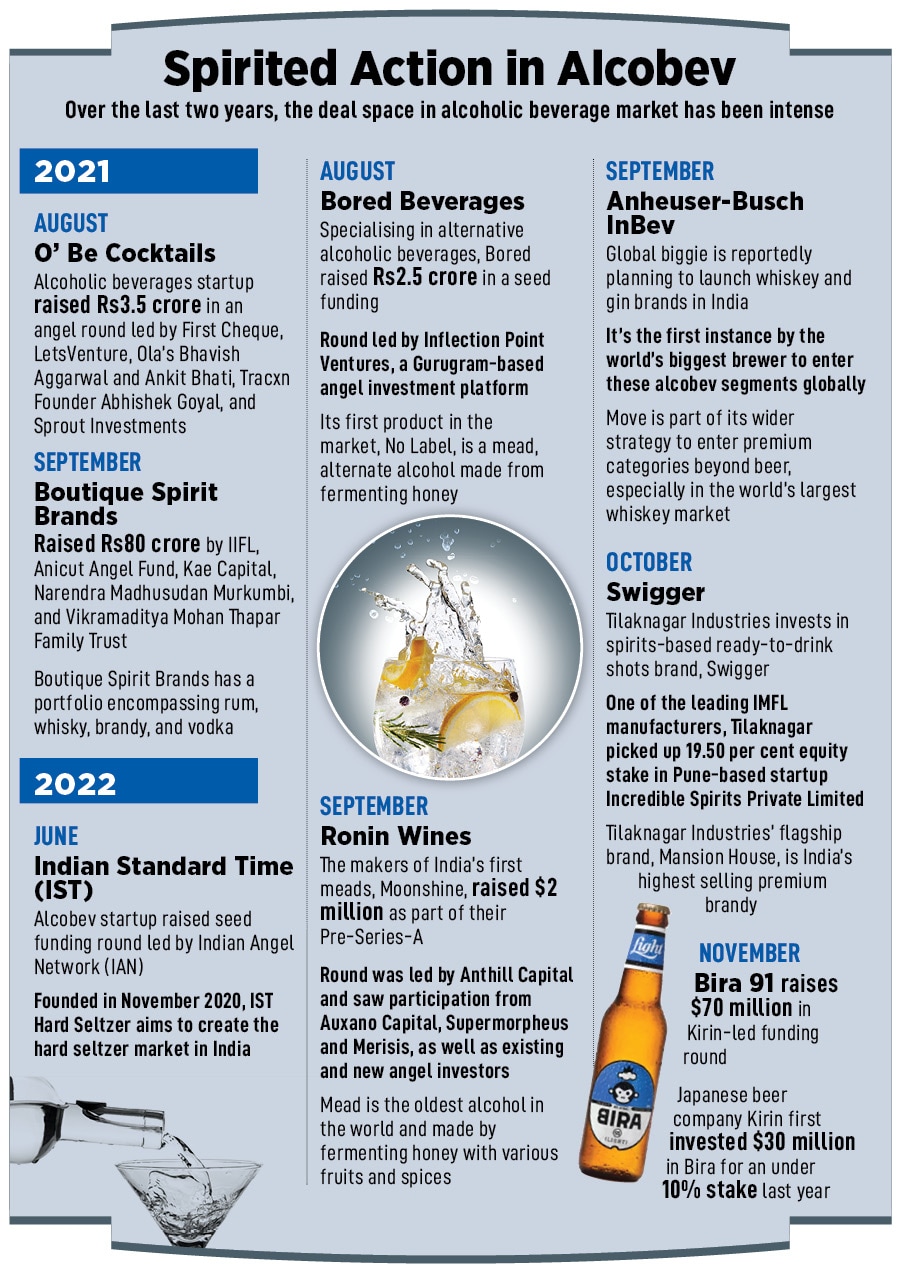
Gin's out of the bottle: Why alcobev company Nao is in high spirits
Diageo-backed Goan company Nao Spirits is brewing a craft-gin revolution in India. Can it shake and stir up the alco-beverage market?
 Anand Virmani, Cofounder, Nao Spirits and Beverages
Anand Virmani, Cofounder, Nao Spirits and Beverages
Punjab, 2016. The owner of a local distillery in Punjab sniffed moolah. It was sometime towards the latter half of 2015. Purwez Patel, former head of manufacturing at Pernod Ricard, was accorded a royal welcome given his pedigree and clout. “So how many cases are you looking at from us,” the owner inquired after throwing a lavish lunch for Patel and his friend Anand Virmani. The hospitality was followed by a whirlwind tour of the sprawling production facility. “I think 7,000 cases should be sufficient to begin with,” replied Virmani, who had sought Patel’s help in spotting distillery and production units for launching his yet-to-be announced alcobev brand. “7,000 per week is a great number,” exclaimed the owner. His eyes lit up. Patel, who has had a stint with the world’s second-largest wine and spirits seller, was expected to order big. “He would never go for a pint. It has to be large,” the owner said to himself.
There was an expectation mismatch, though. “No, we're looking at 7,000 cases a year,” clarified Virmani, who was then employed as a wine and marketing consultant with Perch Wine & Coffee Bar in Delhi. The former Deloitte consultant had worked for over three years at William Grant & Sons, the makers of Glenfiddich, one of the most famous single-malt Scotch whiskies. After his stunted stint as marketing manager of Remy Cointreau, a French alcoholic drinks company that produces Cognac, liqueurs and spirits, Virmani joined Perch. Now, he was preparing to roll out his craft gin brand.
Back in Punjab, the meeting ended abruptly. “Mr Patel,” the miffed owner underlined, “such a tiny quantity doesn’t make sense for us at all.” He also offered an unsolicited advice. “Craft gin has no place in the Indian universe,” he said, glancing at Virmani. The would-be first-generation entrepreneur was by now used to such uncharitable comments. He had met many naysayers who scoffed at the idea of craft gin. “Only Aladdin had a genie. But that was fiction and magic,” taunted one of the funders who shied away from investing in the ‘preposterous’ project. “It’s a ladies’ drink,” another one took a jibe. “Only old people drink gin,” came another barb.

 Virmani’s confidence was stirred and shaken a bit. “Are we missing something,” he asked his wife Aparajita Ninan who was a graphic designer at Sesame Street India. “Are you sure we're doing the right thing,” he again asked Ninan, who would later be the co-founder of the company. Is there a larger message of ‘stay away from craft gin’ that the stream of steady rejections are trying to underline, he wondered.
Virmani’s confidence was stirred and shaken a bit. “Are we missing something,” he asked his wife Aparajita Ninan who was a graphic designer at Sesame Street India. “Are you sure we're doing the right thing,” he again asked Ninan, who would later be the co-founder of the company. Is there a larger message of ‘stay away from craft gin’ that the stream of steady rejections are trying to underline, he wondered.













